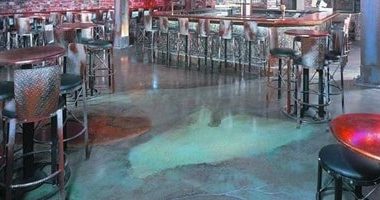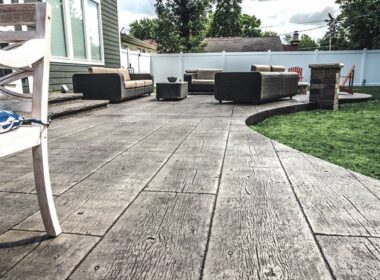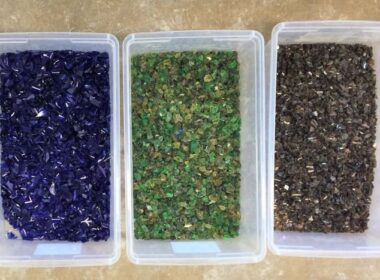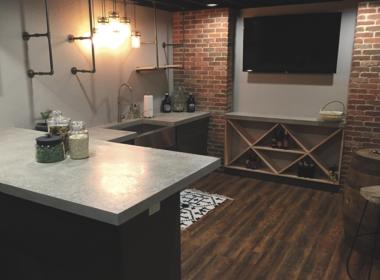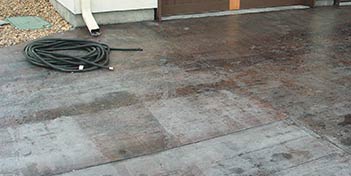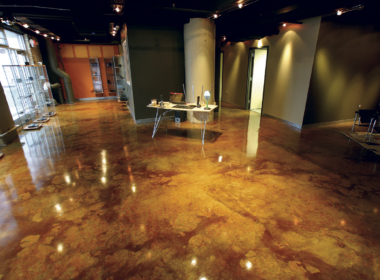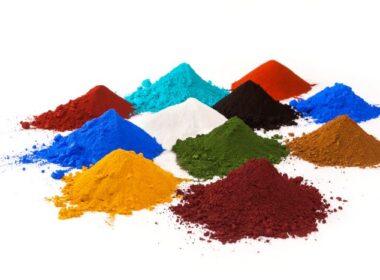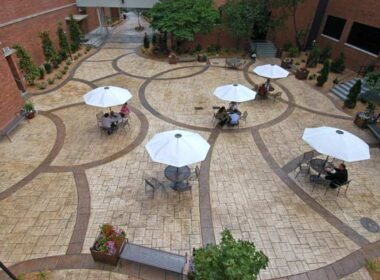From concept to installation, Tina Anderson’s Tri-Co Floors redefines architectural concrete from the ground up.
Concrete Placing
Instead of pouring concrete, concrete installers place concrete where they want it to go. And there are right ways and wrong ways to do this.
Set Realistic Expectations
for Integrally Colored Concrete
When choosing to use colored concrete on a project, there is very often a discrepancy between the owner’s expectations and the reality of the finished job. Two major reasons for this are that manufacturers’ color charts cannot possibly show the true color, and most contractors fail to adequately explain this to the customer.
Waste Glass in Concrete has Advantages and Disadvantages
According to a U.S. Environmental Protection Agency report, the total amount of waste material has increased from 88 million tons in 1960 to 262 million tons in 2015. In 2015, 26% of the waste materials was recycled, 9% was composted, 13% was combusted with energy recovery and 52% was disposed of in landfills.
Concrete Forms and Edge Liners Can Simplify the Job
When it comes to forming the edges of countertops, pool coping and steps, a good forms and edge liners are indispensable tools. These will help you do the job both quicker and easier. No more hand chiseling or finagling a texture mat to give you a detailed edge. Some form […]
Placing Decorative Concrete in Warm Weather
Most of the country is still shaking off the effects of a long cold winter followed by a wet spring. Eventually the temperature will rise, and the long hot days of summer will be upon us. With that in mind now would be a good time to review warm weather practices.
Why Does the Decorative Concrete Industry Focus on a 28-day Cure Time?
The 28-day curing time is standard in the concrete industry and comes into play on almost every project, including the application of most decorative sealers, coatings, stains and toppings. Is that because the concrete needs to have a certain strength, or is there something else going on?
Well-placed Joints in Concrete Help Channel Cracking
When it comes to concrete — as with so many other things in life — people tend to judge a book by its cover. There’s nothing like a giant crack or a crumbling corner in a recent concrete placement to make an unhappy customer.
How to: Planning, Pouring and Finishing Half-Round Concrete Steps
When you are finished pouring a set of half-round steps using these techniques, take a picture and hold it next to a set of regular steps on your next estimate.
Integral Color for Concrete:
The Inside Scoop
Greg Hurst still recalls the first time he used integral color for a concrete installation project. It was 2010 and the founder/owner of Alabama Decorative Concrete in Birmingham had been hired to install a 12,000-square-foot driveway that would be stamped throughout.
Plastic Forms for Concrete Offer a Reusable Solution for Curves and Circles
The days of the straight-lined concrete walkway, patio or driveway are waning. Designs that incorporate sweeping curves or tight radiuses are more popular now than ever.
